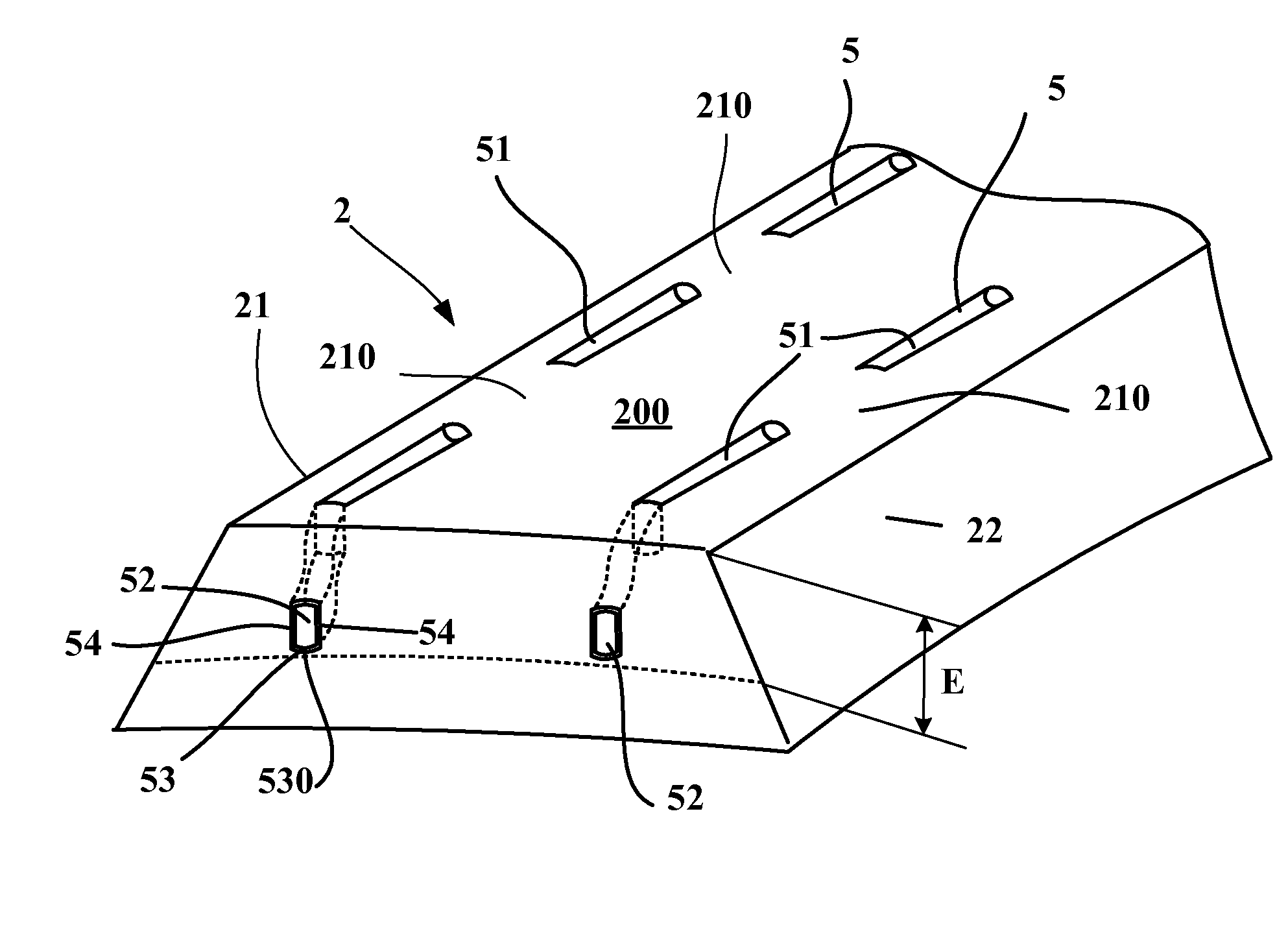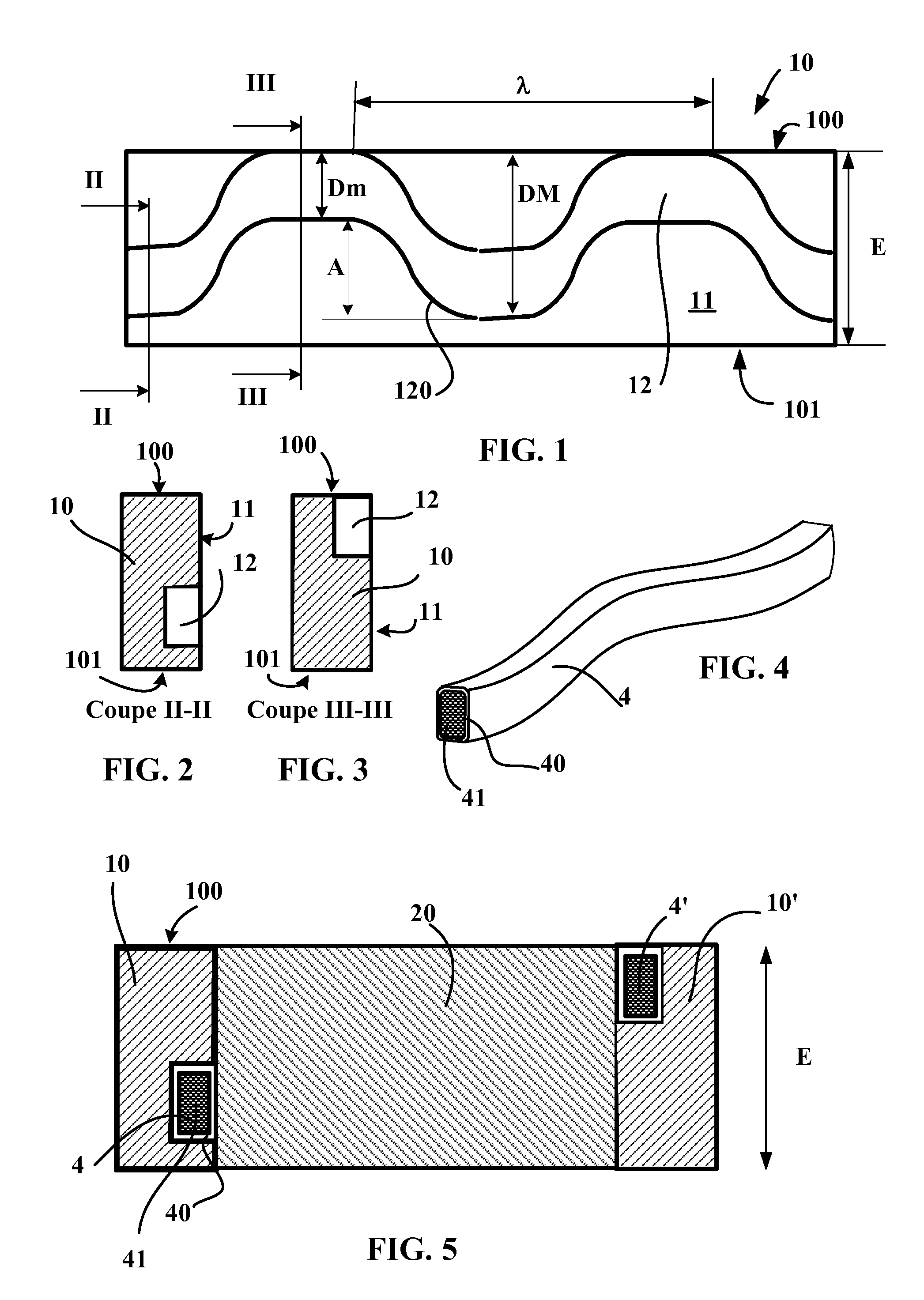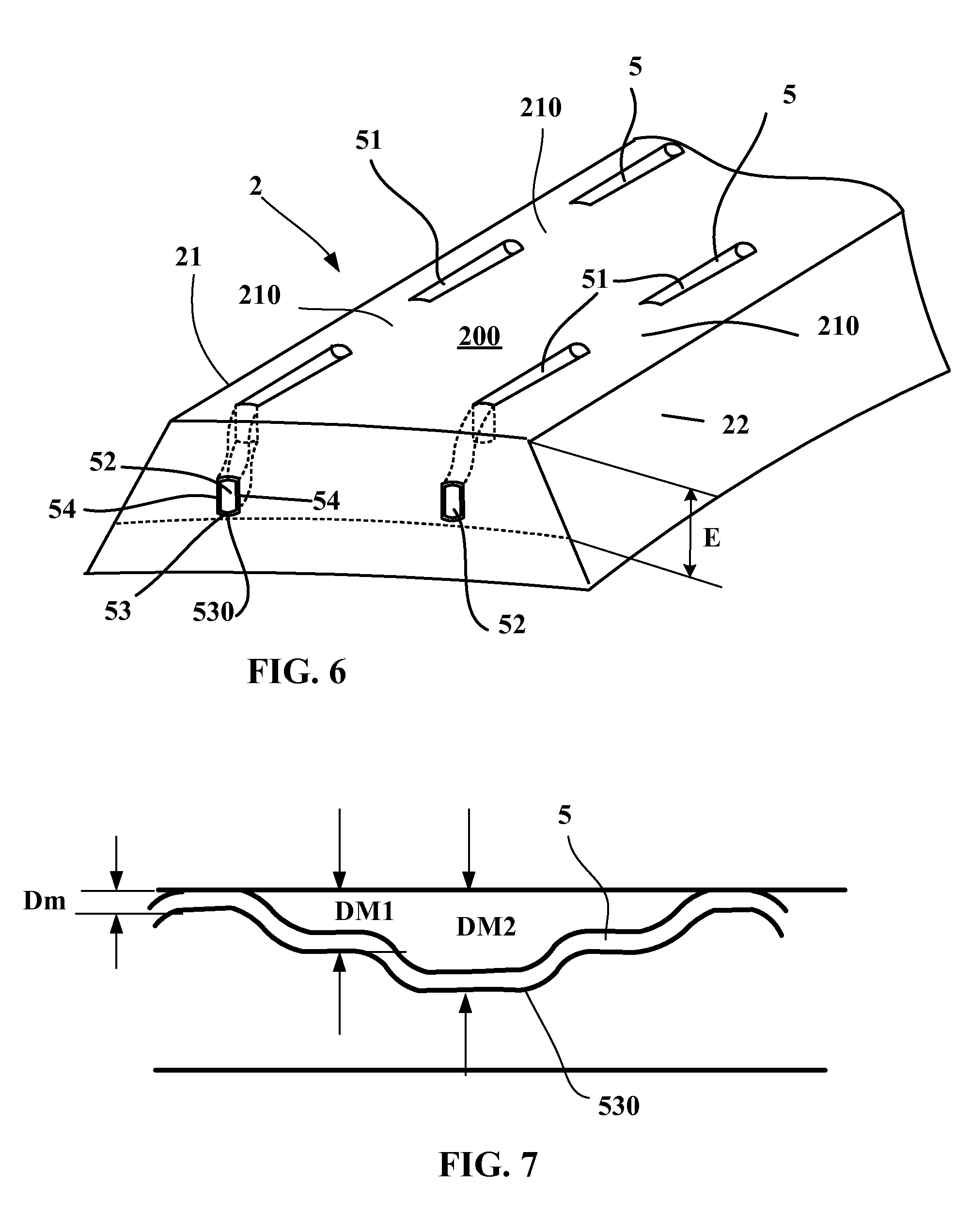Tread including at least one wavy groove, and method for producing same
a groove and groove technology, applied in the field of treads, can solve the problems of rubber breakage, reduced service life of tires, and broken grooves at the bottom of certain grooves
- Summary
- Abstract
- Description
- Claims
- Application Information
AI Technical Summary
Benefits of technology
Problems solved by technology
Method used
Image
Examples
Embodiment Construction
[0076]FIGS. 1 to 5 show the steps involved in producing a tread according to the invention.
[0077]FIG. 1 shows a lateral surface 11 of an unvulcanized band of rubber 10 that has an external surface 100 intended to become part of a surface of a tread after vulcanizing and molding and an internal surface 101 intended to be placed on a green tire. This band of rubber has—measured between the external 100 and internal 101 surfaces, a height E corresponding to the thickness of the tread. Formed on the lateral surface 11 of this band of rubber 10 is a groove 12 following a wavy line in the height E of the tread.
[0078]This groove 12 is appropriately sized to accept an insert 4 like the one shown in example in FIG. 4. This groove 12 has a wavy shape and is continuous in the main direction of the band of rubber. This groove 12 comprises a bottom line 120 (line connecting the points on the bottom which are furthest towards the inside) which undulates between a minimum distance Dm and a maximum...
PUM
| Property | Measurement | Unit |
|---|---|---|
| depth | aaaaa | aaaaa |
| depth | aaaaa | aaaaa |
| groove depth | aaaaa | aaaaa |
Abstract
Description
Claims
Application Information
 Login to View More
Login to View More - R&D
- Intellectual Property
- Life Sciences
- Materials
- Tech Scout
- Unparalleled Data Quality
- Higher Quality Content
- 60% Fewer Hallucinations
Browse by: Latest US Patents, China's latest patents, Technical Efficacy Thesaurus, Application Domain, Technology Topic, Popular Technical Reports.
© 2025 PatSnap. All rights reserved.Legal|Privacy policy|Modern Slavery Act Transparency Statement|Sitemap|About US| Contact US: help@patsnap.com



